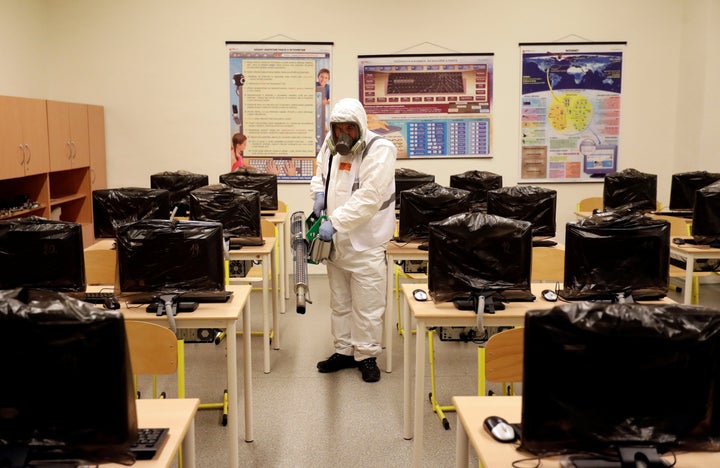There are few occasions when world leaders face the same challenge at the same time.
As global stock markets dive, retailers sound the alarm over panic buying and millions of people are placed on lockdown, the spread of coronavirus has seen countries all fighting the same enemy – but often in very different ways.
The divergent responses have raised questions over preparedness at a global level. But what impacts have the different approaches of the countries been, and what can we learn from them?
Leadership
Leaders around the globe have both won praise and come under fire in different ways for their handling of the outbreak - but one message has been clear: the public likes hearing from the experts.
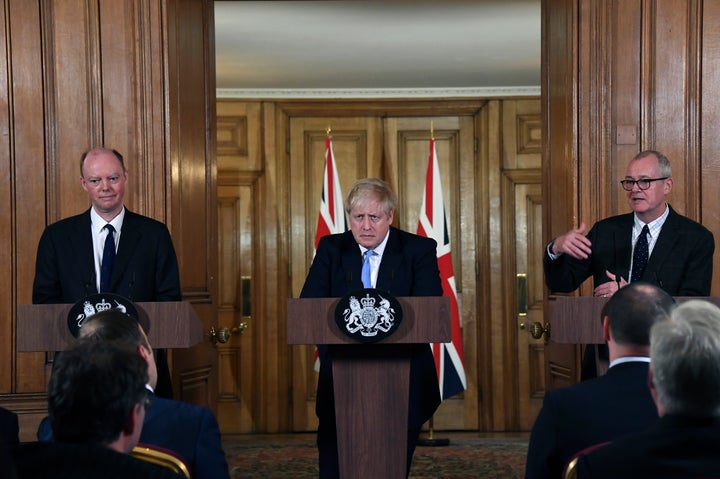
The UK’s chief medical officer, Professor Chris Whitty, has helped millions make sense of the crisis amid a sea of information, with calm and assured answers to the questions on everyone’s lips. He’s been described as “properly impressive” and the “expert we need” - and even touted by some as the next 007.
Other governments with direct, concise and evidence-based messages appear to be faring well in the public eye, with South Korean, French and Canadian leaders winning praise from their citizens.
In France, health ministers are giving daily briefings on newly-identified cases, and president Emmanuel Macron has summoned exceptional defense councils and cabinet meetings to discuss the situation.
The picture is similar in Spain, where government officials are spreading a message of “alert, but not alarm,” focusing on the early detection and containment of cases. Neither country though has imposed restrictions on internal movements of residents.
South Korea is among the countries most severely hit by coronavirus. The country’s president Moon Jae-in was forced into damage control after declaring that the outbreak would “disappear before long.” It didn’t, and as of Monday cases had gone beyond 7,000 in South Korea.
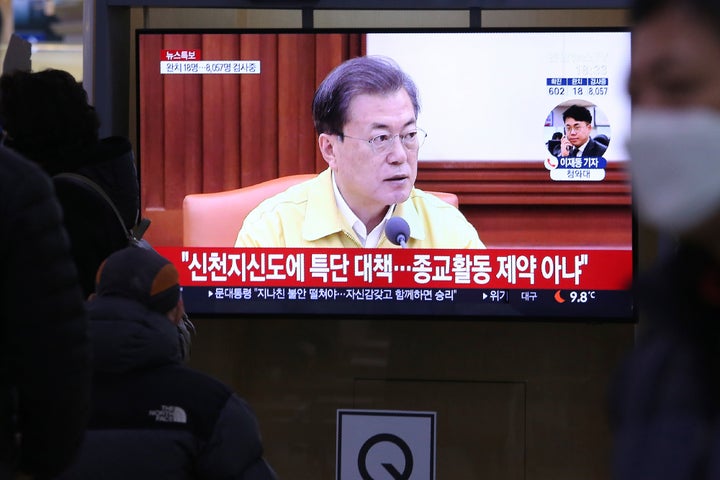
Since then the public response to the government’s strategy has been “relatively good,” focusing on transparency and speed, a HuffPost Korea editor said.
“From the very beginning, health authorities held televized briefings everyday, twice a day, to report the number of new cases and death toll, as well as any noticeable change with regards to the situation,” they added.
“In addition to that, every local government also provides a daily update on the situation in their area, through a press briefing, text messages and emergency notifications on smartphones.”
In Canada, prime minister Justin Trudeau has stressed the importance of basing his government’s response “on the best recommendations of the World Health Organization” and leading health experts.
Trudeau has been leading a noticeably toned-down response to the coronavirus outbreak compared to the US, a HuffPost Canada editor said. Trudeau has said Canada won’t ban foreign travelers from entering the country because “knee-jerk reactions” won’t keep Canadians safe. Canada has issued travel notices for six countries, but has not banned travel to and from any nation since the outbreak began.
An Ipsos poll published on March 4 suggests Canada’s approach to the virus appears to be relatively calm. Among nine countries surveyed (Australia, Canada, France, Germany, Italy, Japan, Russia, the US, the UK, and Vietnam), the lowest percentage of people who think the virus poses a high or very high threat to their country is Canada at 21%. In comparison, 65% of Japanese respondents and 49% in France feel this way, according to the survey.
In the UK, the number of confirmed cases has reached 319, with five reported deaths.
The World Health Organisation (WHO) said China’s move to quarantine about 60 million people in central Hubei province, where Covid-19 originated, in late January helped the rest of the planet prepare.
Gail Carson, head of ISARIC, an international clinical research federation, told HuffPost: “WHO has shown great leadership in bringing together multiple disciplines from within the research community to develop a research agenda and roadmap to help facilitate a coordinated research response.
“The effort regarding all aspects of research by China, even whilst in the ‘eye of the storm’ has been remarkable and we will learn from their research outputs.”
However, similar moves by Italy’s prime minister Giuseppe Conte to isolate millions of people in its northern provinces, and then Monday’s extreme decision to lock down the entire country, could prove more difficult to implement in Europe.
While the “aggressive” measures were praised by WHO experts, Conte faced criticism after leaks of his government’s draft plans appeared in the press hours before they were approved, leading to widespread uncertainty and panic. “On Saturday night many people went to Milan station to take the last train to South Italy. It was an incredible scene,” one HuffPost Italy editor said.
But the picture is not quite the same in the US, where the efforts of experts at the Centres for Disease Control and Prevention (CDC) to control the virus have been hampered by a confused White House approach.
Donald Trump has been criticized for claiming a vaccine would be ready in a few months, only to be contradicted by a medical expert at the same table saying it could take up to 18 months.
“It’s going to disappear,” Trump said of the coronavirus last Thursday. “One day it’s like a miracle, it will disappear.”
Trump has also come under fire for reportedly overruling his health officials, who wanted to recommend elderly and physically fragile Americans be advised not to fly on commercial airlines.
On Friday, the CDC updated its website to tell older adults and people with severe medical conditions such as heart, lung or kidney disease to “stay home as much as possible” and avoid crowds.
But on the whole, ISARIC’s Gail Carson said, experts across countries and continents have worked well together.
“The spirit of collegiality across the clinical research groups across the globe has been humbling and inspiring,” she added.
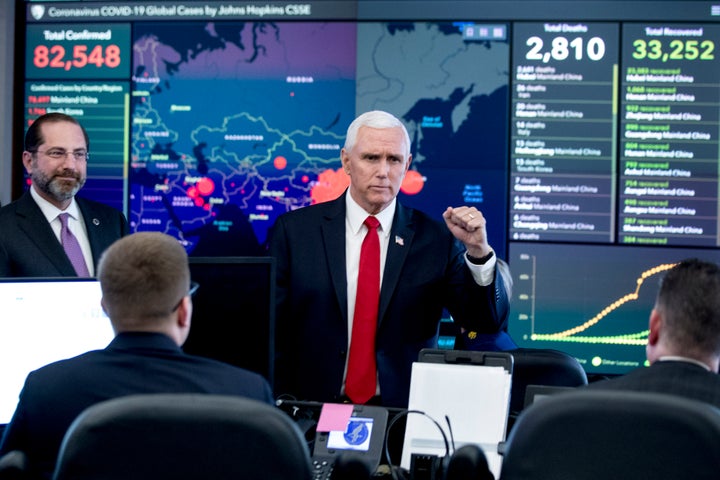
Healthcare
Approaches to both testing for the virus and accessing healthcare vary wildly.
In the US, suspected cases can expect to be swabbed and to pay for the privilege (if the reported shortage of testing kits doesn’t become more severe), while in China a blood test has been developed.
Most tests can be run within a matter of hours – but what happens next depends on how much pressure countries’ healthcare systems can bear.
In India, 52 laboratories across the country are able to run tests, with about 600,000 carried out so far, mainly at airports and seaports. But in many larger regions, public healthcare could struggle to contend with large numbers of sick people.
“If the government is unable to contain cases to the large cities and among people with relatively more resources, the fallout could be huge,” a HuffPost India editor said.
In most European countries, including the UK, specific hospitals have been designated as Covid-19 treatment points, with specialist isolation facilities set up.
In France, the “measured tone” of government officials has helped to alleviate concerns among the public, a HuffPost France editor said. “French people have faith in their social security and the quality of their health system. I’m guessing this helps people not to panic,” they added.
But in Italy, hospitals are reportedly struggling under the added pressure, and doctors in the UK fear the picture could be similar within the NHS should the number of cases snowball.
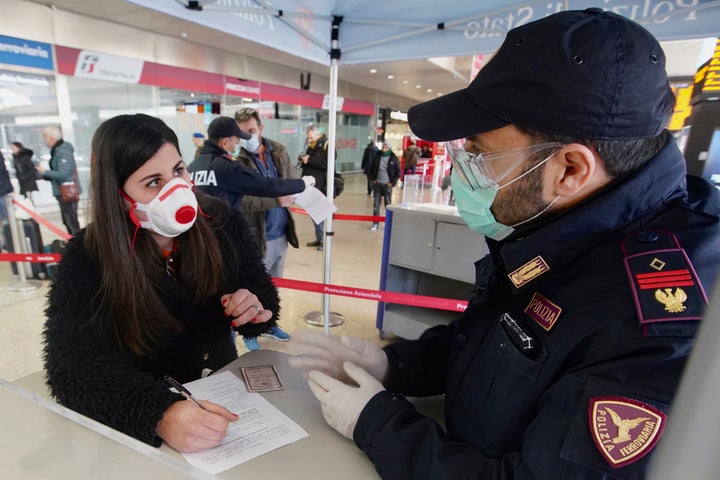
US doctors also fear a tremendous strain on their health system, especially hospitals, leading to shortages of beds, supplies and personnel.
In the meantime, provisional measures are being put in place across the country, including in San Francisco, where hospitals are setting up tents to screen patients with respiratory symptoms before they set foot in the building.
In Seattle and New York, new guidelines are calling for restricting the use of masks and gowns, in order to conserve limited supplies.
In South Korea, where professionals have seen some success in bringing the outbreak under control, 190,000 tests have reportedly been carried out, including in drive-in centres – about 50 times the numbers done in the US so far.
Help for the vulnerable or low paid
The impact of imposed quarantine or self-isolate on the economy, and people’s livelihoods, is huge.
In the UK, charities have warned hundreds of thousands of low-paid workers could be tipped into poverty should they be unable to get to work.
While ministers have promised those affected will qualify for sick pay, many are not convinced the government is doing enough to help those who will suffer the most financially.
But health secretary Hancock told MPs on Tuesday: “We will ensure that whatever the status of people who work right across the economy, whether they are self-employed, whether they are employed but work fewer than the number of hours a week, everybody will get the support so they are not penalized for doing the right thing.”
In the US and Australia the picture is less favourable. Australian attorney general Christian Porter said the government would not “jump to a solution in anticipation of a problem” to help hourly-paid workers facing a dilemma, suggested the higher rate of pay casual workers receive mean many will have “already made provisions” if forced to take leave for medical reasons.
Millions of workers in the US have no paid sick leave entitlement, meaning many are forced to go to work even when they are struggling – potentially escalating the spread of the virus.
Conditions are better in France, one HuffPost editor said, thanks to the country’s “generous medical and social system.”
“People who are confined have a right to a 20-day sick leave payed by our social security,” our editor added.
“The government is more concerned by the fall of the rate of growth and its consequences on unemployment. A global economic crisis is feared, so the government authorized partial unemployment measures, as well as the deferral of social taxes, to help the companies to cope with the consequences of the epidemic.”
Schools
While children and young people have not been badly hit by Covid-19 (usually displaying milder symptoms if they do contract the virus|), school and colleges closures have been among the go-to measures for most countries in limiting the spread of infection.
In the US and UK, closures have been more sporadic, focusing mainly on areas where cases are suspected and being undertaken largely as a precautionary measure.
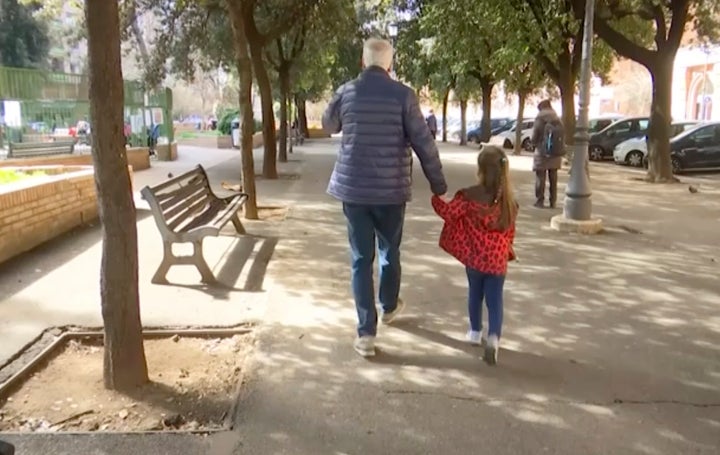
A UK Department for Education spokesperson told HuffPost: “Advice from Public Health England continues to be for schools to remain open, unless advised otherwise.”
In Italy, where infection is much more widespread, schools, colleges and universities across the country are closed until April 3.
A similar strategy in Japan, where less than 1,200 cases have been confirmed, drew criticism after prime minister Shinzo Abe admitted he had made the decision without consulting infectious disease experts, “because we did not have the luxury of taking our time in coming up with a decision.”
When the outbreak first surfaced a few weeks ago, schoolchildren in China were the only ones missing classes.
Now the picture is similar, to varying degrees, in South Korea, Iran, France, Pakistan and India, with more expected to follow.
Social events
As cases increase across the US, the University of Washington announced Friday that it would hold classes remotely until the end of March, while some major corporate offices are telling employees to work from home.
Big companies like Netflix, Apple, Amazon and others pulled out of attending the annual tech conference South by Southwest in Austin, Texas, before the event was cancelled entirely over the weekend.
Italy had closed museums and archaeological sites, even before the entire country was placed on lockdown, and suspended all weddings until April 3
Restaurants all around Italy are expected, somehow, to keep patrons three feet away from each other. The Vatican Museums are now closed, including the Sistine Chapel, in yet another blow to Italy’s all-important tourism industry.
Across Asia, Disney-themed tourist parks are closed or partially closed, along with many Chinese museums.
France’s Louvre Museum in Paris was temporarily shutdown earlier this month and public visits to the Elysee palace are suspended, while in Ireland the annual Dublin St Patrick’s Day parade has been scrapped.
In Greece, a row has erupted around the Orthodox Church after it was claimed the virus could not be transmitted via Holy Communion. But one HuffPost Greece editor said there was “no panic, no confusion” in the country in general.
All La Liga matches in Spain’s top football league will be played behind closed doors for the next two weeks, bosses announced on Tuesday, while all sporting events in Italy have now been halted after matches were initially played without spectators.
In the UK, health secretary Matt Hancock said the government was being guided by scientific evidence when it came to recommending whether mass events should be cancelled, or home working should be encouraged.
―
With contributions from Wan Heo (HuffPost Korea), Geoffroy Clavel (HuffPost France), Jon Rumley (HuffPost Canada), Gianni Del Vecchio (HuffPost Italy), Marina Velasco (HuffPost Spain), Galatia Vourvouli (HuffPost Greece) and Sharanya Hrishikesh (HuffPost India).
